Biol 14 Week 3 Sensory System Pt. 1
1/87
There's no tags or description
Looks like no tags are added yet.
Name | Mastery | Learn | Test | Matching | Spaced |
|---|
No study sessions yet.
88 Terms
Sensory Sensation
The conscious or subconscious awareness of external or internal stimuli, detected by sensory receptors.
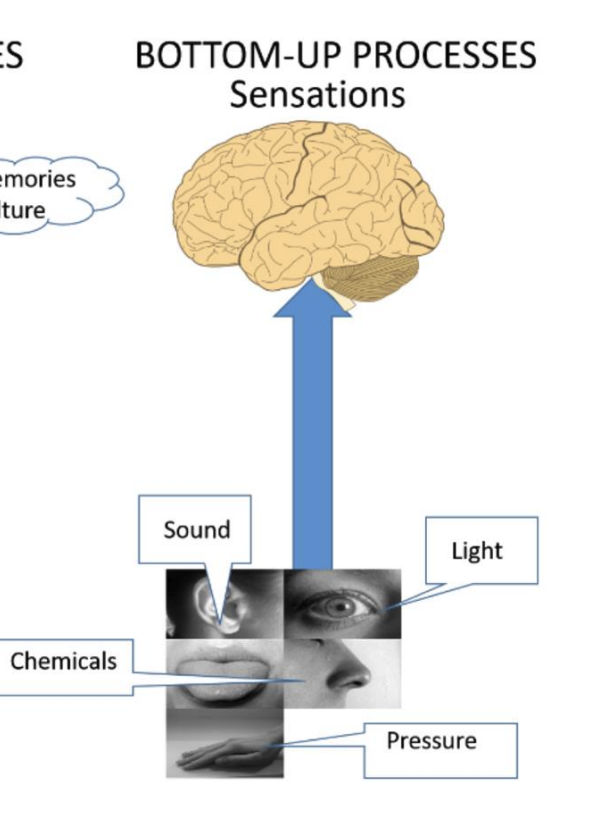
Sensory Perception
The conscious awareness and interpretation of the meaning of sensations, involving the “higher” centers of the brain.

Chemoreceptors
Receptors that detect chemical signals, such as those involved in taste, smell, and monitoring blood levels of gases and pH.
Photoreceptors
Sensory receptors that respond to light. Found in the retina, they are responsible for converting light stimuli into electrical signals for vision.
Thermoreceptors
Receptors sensitive to temperature changes, helping the organism sense heat and cold.
Sensory Transduction
Mechanism by which a sensory stimulus (eg. mechanical, chemical, electromagnetic, thermal) is converted into a change in membrane potential and/or electrical activity
Adequate Stimulus
The type of energy (stimulus) that a receptor responds to best
Sensory Neuron
Type of afferent neuron that carries the electrical signal generated by sensory receptors to the CNS.
Receives input from sensory receptor cells and transmits the information via action potentials to CNS
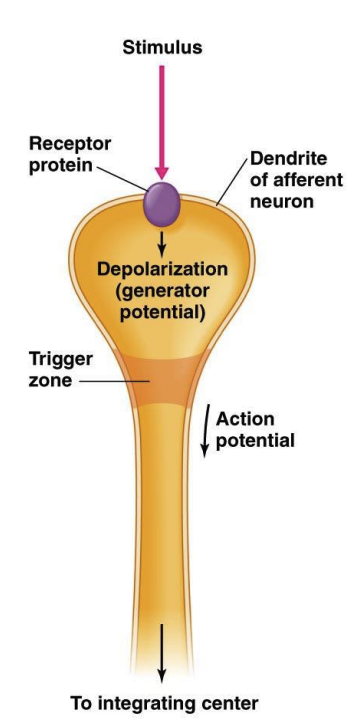
Epithelial sensory receptor cell
Specialized cell, typically found in tissues such as the skin or mucous membranes, that directly detects a sensory stimulus (like light, sound, or chemicals).
Often release neurotransmitters in response to the stimulus, which then activates a nearby afferent sensory neuron.
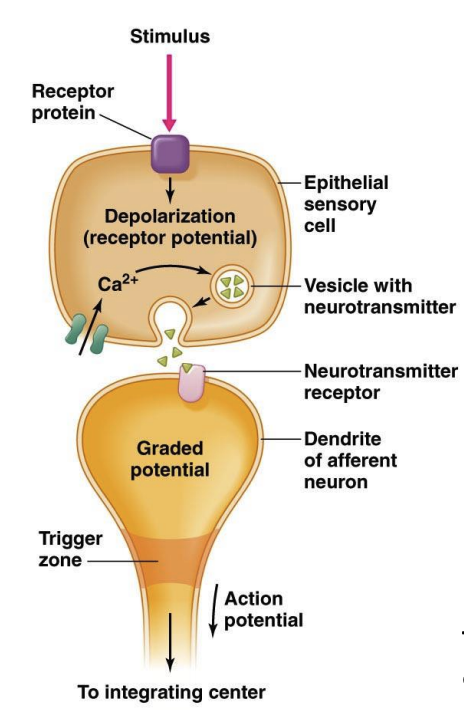
Merkel Cell-Neurite Complex
Tonic sensory receptor located in the basal epidermis and hair follicles, particularly sensitive to light touch and pressure.

Dynamic Range
The range of stimulus intensities that can be encoded by a sensory receptor
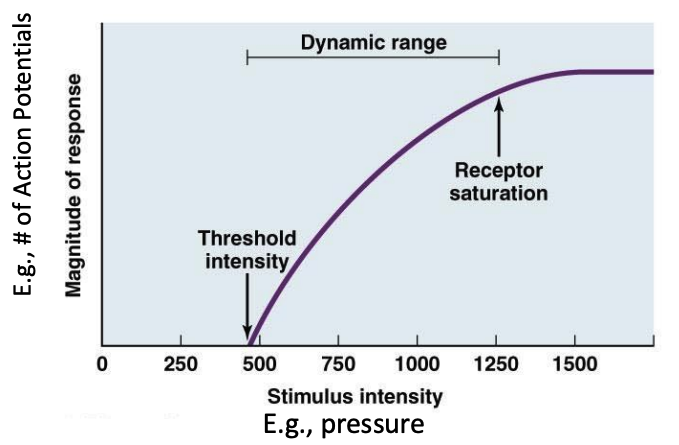
Multiple sensory receptors
____________ can work together to increase the Dynamic Range
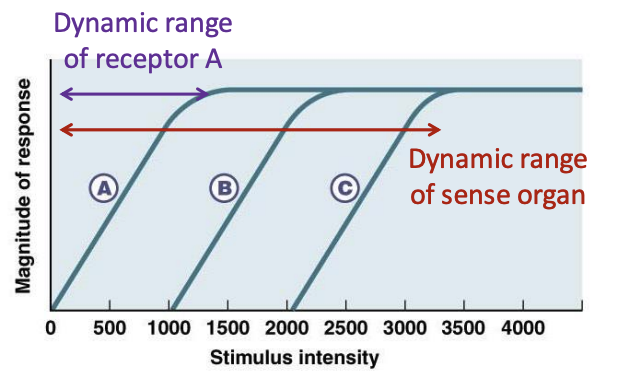
Range fractionation
Multiple receptors with different dynamic ranges increase the dynamic range of entire sense organ.
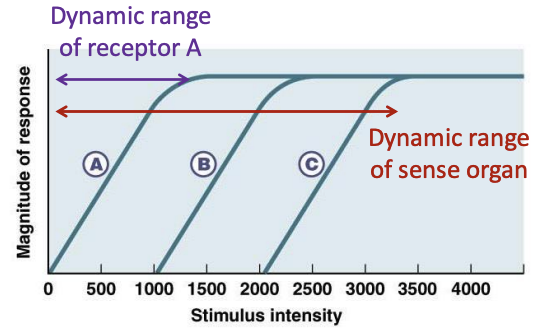
differ/encode
Sensory receptors can also _____ in how they ______ a stimulus
Tonic
encodes entire duration of stimulus
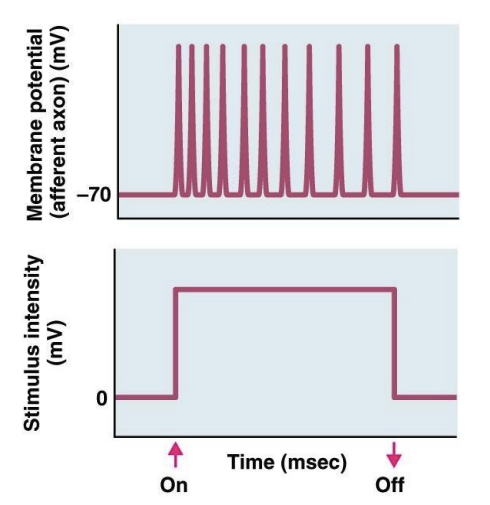
Phase
encodes onset or offset of stimulus
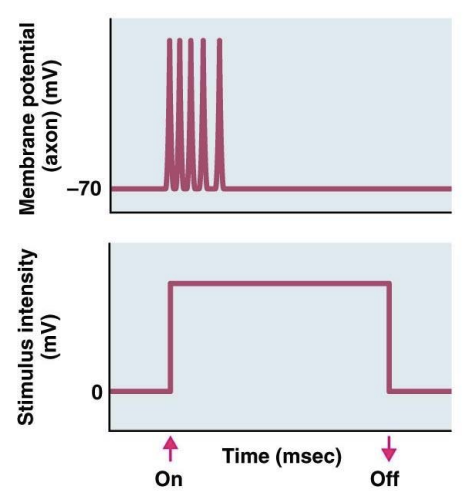
Lateral inhibition
Neural mechanism that improves spatial resolution and increases contrast between strong/weak stimuli
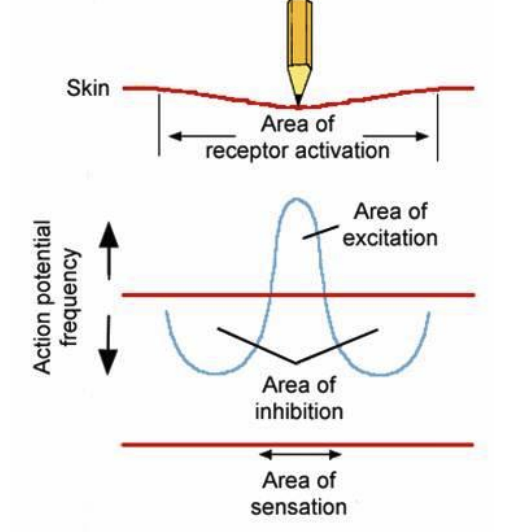
neighboring neurons
In lateral inhibition, inhibitory neurons suppress the activity of ________. This helps highlight the location of the stimulus
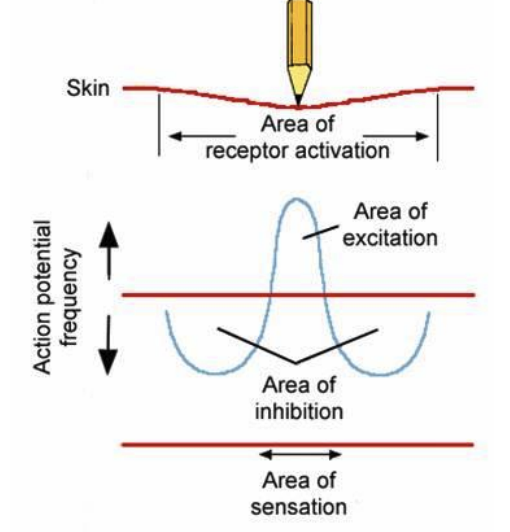
Free Nerve Endings
Sensory receptors that detect touch, pain, and temperature. These can be phasic or tonic. They are sensitive to cold and have 3-10 times more receptors for cold than heat.

Meissner's Corpuscle
Phasic sensory receptor found in the skin that detects movement over the skin. It is especially abundant in the fingertips and lips and is very sensitive to fine touch and pressure.

Corpuscle
Afferent neuron dendrites wrapped in connective tissue bundle
Ruffini ending
Corpuscle: Tonic, detects heavy prolonged touch/pressure and sustained cutaneous stretch & joint position (proprioceptor)

proprioceptor
Sensory receptor which receives stimuli from within the body, especially one that responds to position and movement.
Pacinian corpuscle
Corpuscle: Phasic, detects vibrations

TRP channels/free nerve endings
_______ in _______ are activated by changes in temperature as well as by compounds that taste cool (ie. menthol) or hot and spicy (ie. capsacin)
Transient Receptor Potential channels
group of ion channels located in the cell membrane, primarily found in sensory neurons. can be activated by changes in temperature, chemicals, or mechanical stimuli.
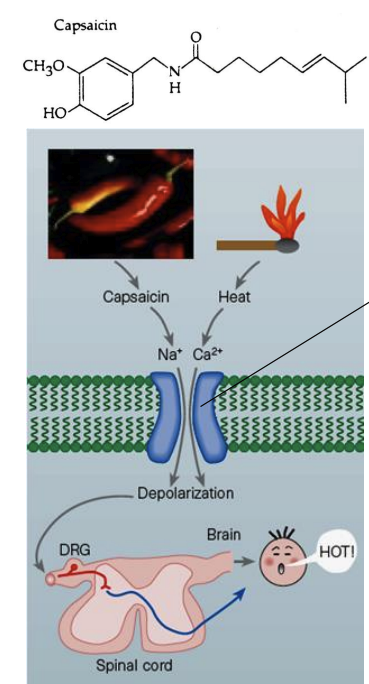
Thermo-sensitive nerve endings
Nerve endings that are capable of detecting minute changes in temperature, as small as 0.003°C, allowing for precise temperature sensing in environments such as those encountered by snakes.
Infrared receptors
Receptors that detect infrared radiation (heat) as part of the sensory system, found in certain organisms such as snakes, enabling them to detect warm-blooded animals in dark or cold environments.
infrared receptors
Snakes TRP channels are identified as _______
microwave range
A part of the electromagnetic spectrum that includes wavelengths of around 2.8 cm, which are detectable by specific sensory systems, such as those in rattlesnakes, functioning like a biological radar.
Pit membrane
The sensitive structure in snakes, particularly in rattlesnakes, that contains thermo-sensitive nerve endings capable of detecting infrared radiation, allowing them to perceive temperature changes.
Congenital insensitivity to pain (CIP)
A rare condition in which individuals cannot perceive physical pain due to genetic mutations in pain-related sensory neurons, typically caused by mutations in voltage-gated sodium channels.
voltage-gated sodium channels/sensry neurons
CIP is caused by mutations in _________ expressed in ___________ (dorsal root ganglion neurons)
action potentials
In CIP, the mutation prevents the generation of __________
Mechanoreceptors
Cells containing ion channels that open/close in response to mechanical changes such as movement or pressure, specifically the movement of the ECM in relation to the intracellular cytoskeleton.
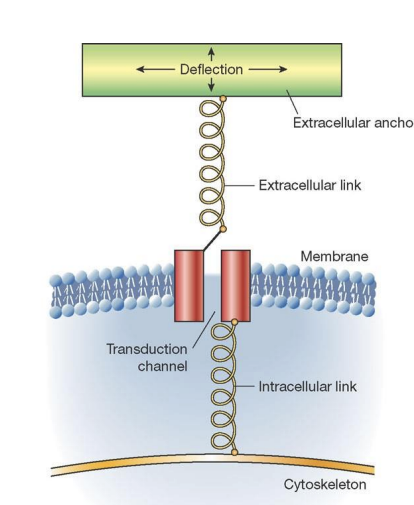
touch
Mechanoreceptors play a crucial role in detecting _______ signals.
Merkel’s disc/Meissner’s corpuscle
For braille, _____ and _____ ‘s firing pattern replicate the braille pattern pretty well
receptive field
The area that a sensory receptor monitors or detects.
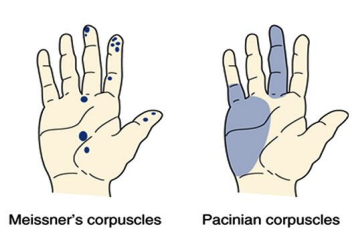
amount of branching/depth of receptor
Both the ________ and the ________ contributes to the size of its receptive field.
Small
Meissner’s corpuscles relative receptive field size
large
pacinian corpuscles relative receptive field size
glabrous skin
Skin with no hair
peritrichial nerve endings
In contrast to glabrous skin (no hairs), in hairy skin there are specialized nerve endings (__________) that “wrap” around the hairs
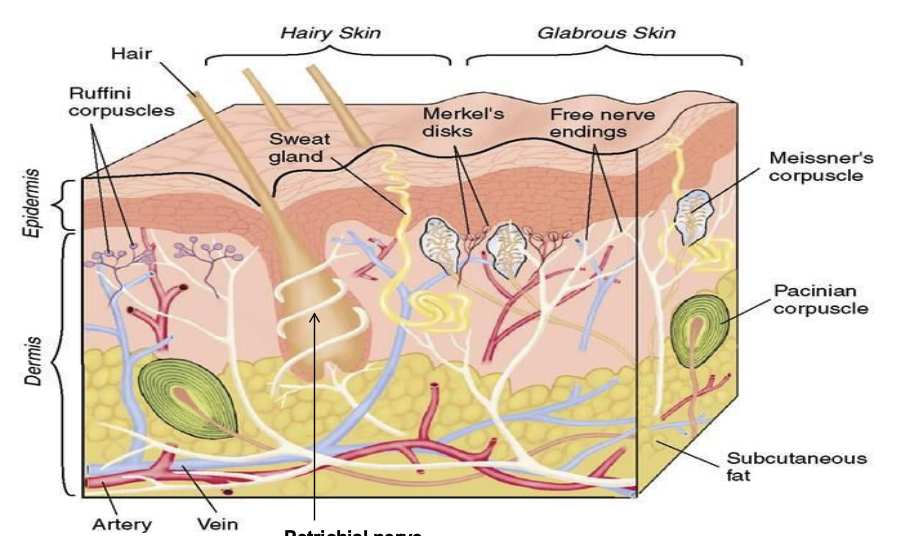
Sensory Receptors
Specialized structures or cells that detect specific types of stimuli (such as light, sound, touch, or chemical signals) and convert them into electrical signals that can be interpreted by the brain. Sensory receptors are located throughout the body and are part of the sensory system.
Nerve ending
The terminal part of a nerve fiber (axon) that makes contact with other tissues, including sensory receptors. These endings detect various types of stimuli (e.g., touch, pressure, temperature) and transmit signals to the nervous system for processing.
Dorsal Root Ganglion
Cluster of sensory nerve cell bodies located in the dorsal root of spinal nerves. These ganglia transmit sensory signals from the periphery to the spinal cord and brain.
specialized nerve fibers
Mechanoreceptors can either be specialized structures (such as Merkel's discs, Pacinian corpuscles, and Meissner's corpuscles) or _______ themselves.
Guard
These are the long, thick hairs (e.g., whiskers in some animals) and are often more sensitive to touch.
Electroreception
ability of certain animals to detect electric fields
mechanosensory hairs
Recent studies show bees use electric fields to locate flowers by sensing tiny _______ on their bodies
Pain/temperature/coarse touch
________ , ________ , and ________ cross the midline in the spinal cord
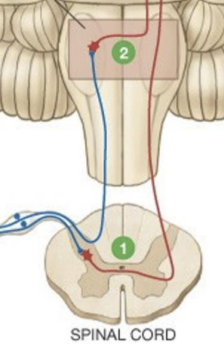
Fine touch/vibration/proprioception
________ , ________ , and ________ cross the midline in the medulla
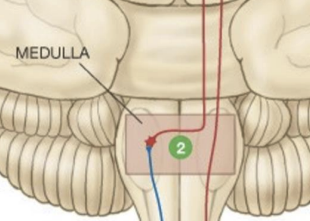
Proprioception
Body’s internal GPS, sense of position in space
sensory/thalamus
____ pathways synapse in the _______
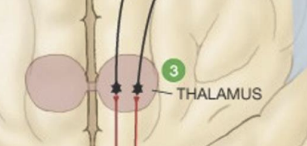
primary somatic sensory cortex
Sensations are perceived in the _____________
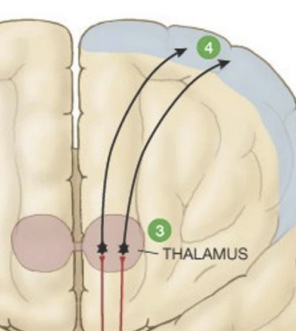
Olfactory reception (Smell)
Detection of airborne or waterborne chemicals from a distant source
Contact reception (Taste)
Detection of chemicals that requires direct contact of the receptors with the chemical source
Extreme sensitivity
The Olfactory System is characterized by _________
Elephants
_______ have a very sensitive sense of smell, They can detect humans a kilometer away or a slice of banana more than 150 feet away
Olfactory bulb
This structure processes information related to smells. It receives signals from the olfactory receptors and sends them to the brain for interpretation.
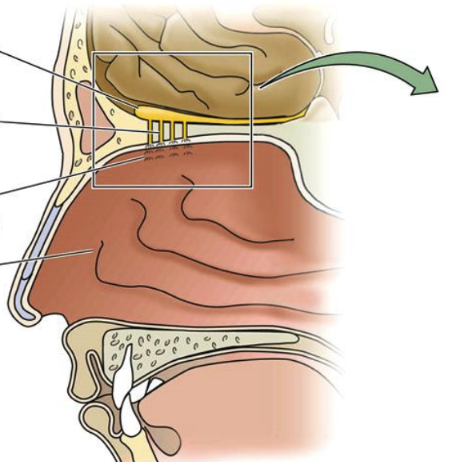
Cribriform plate
A bony structure in the skull that separates the nasal cavity from the brain. It contains tiny holes through which olfactory sensory neurons pass to reach the olfactory bulb.

Olfactory epithelium
The tissue inside the nasal cavity that contains sensory cells called olfactory receptor neurons. These neurons are responsible for detecting odors.
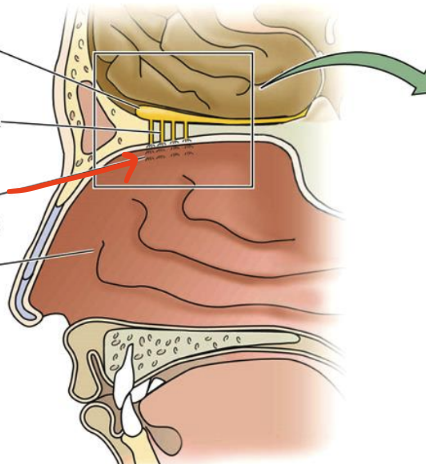
Nasal cavity
The passageway through which air carrying odor molecules travels. The air interacts with the olfactory epithelium, allowing the olfactory receptor neurons to detect smells.
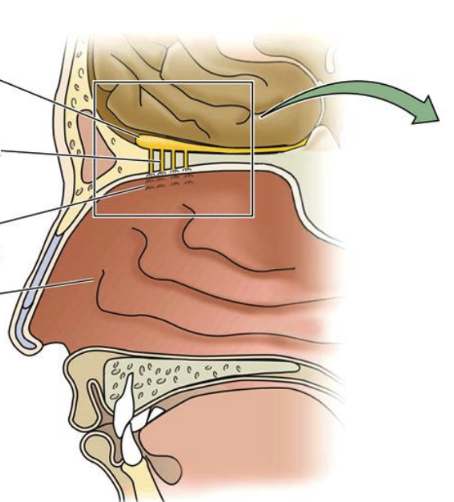
Pyriform cortex
This region processes the raw olfactory information from the olfactory bulb. It is essential for odor identification and perception.
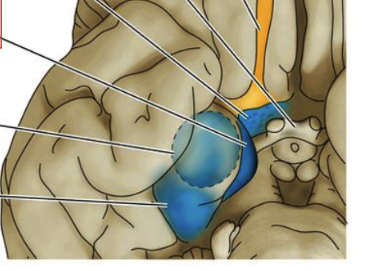
Amygdala
Emotional and memory related processing (applicable for smells)
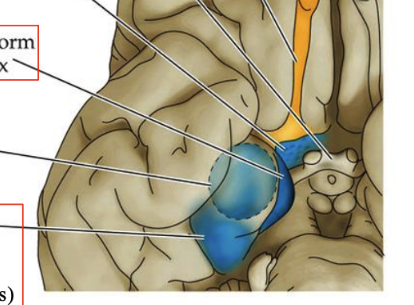
Entorhinal cortex
The input to the hippocampus, links smells with spatial and episodic memory

one/odorant receptor molecule
Each olfactory receptor cell only expresses ____ type of _________
30-60
Olfactory receptor cells replaced every ______ days
Glomerulus
Structure in the olfactory bulb where sensory information from multiple olfactory receptor cells is processed and integrated.
same
Each glomerulus receives information from a specific group of olfactory receptor cells that express the _____ type of odorant receptor molecule
GPCRs/cAMP-gated ion channels
The olfactory transduction mechanism, which involves _______ and __________ in olfactory receptor neurons.
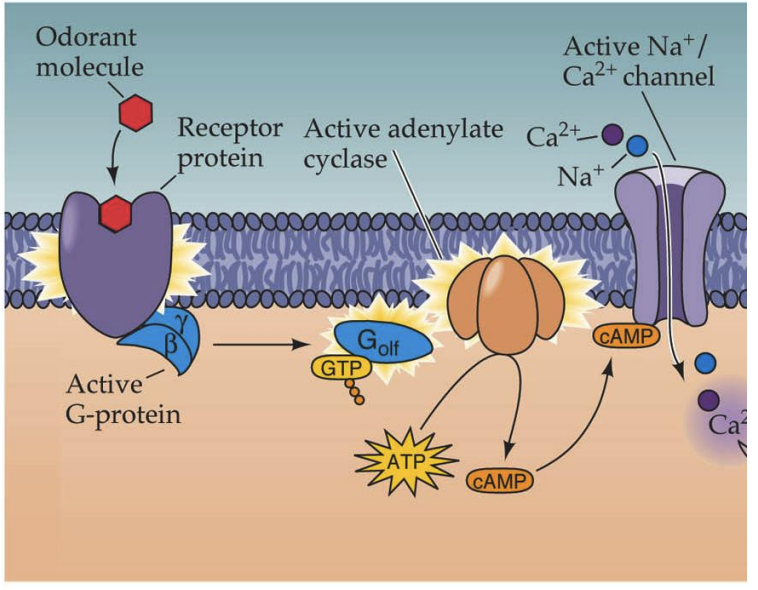
The Combinatorial Code
individual odorants can activate multiple receptors, and individual receptors can be activated by multiple odorants.
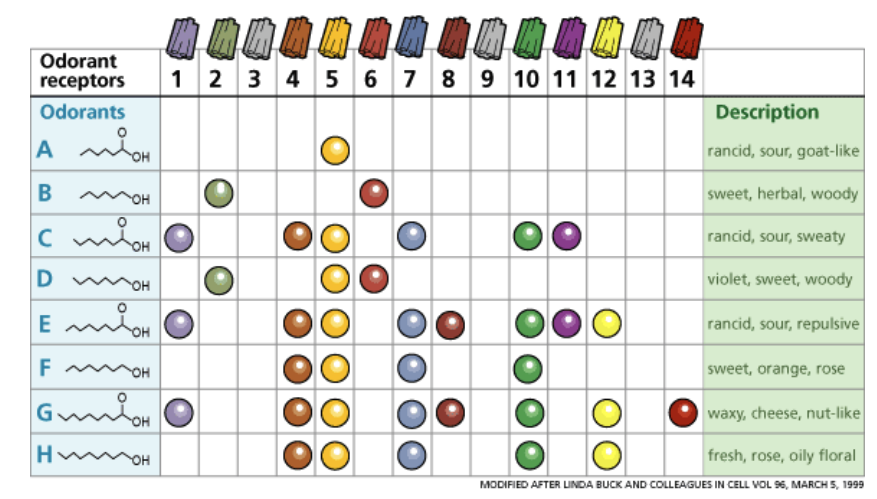
papillae
a small rounded protuberance on a part or organ of the body.
taste buds
Fungiform papilla, foliate papilla, and vallate papilla all have _____
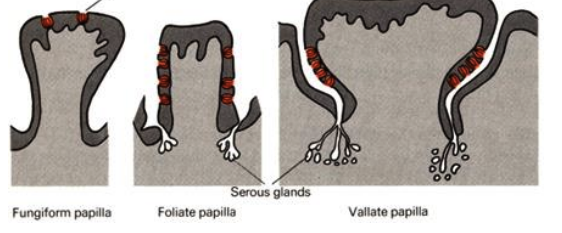
Filoform papillae
No taste buds
Tongue/Mouth/Throat
Taste Receptors are found in the _________
Innervation
process of supplying nerves to a part of the body, enabling them to function
facial (VII)/glossopharyngeal nerve (IX)
Innervation of taste buds in the tongue by afferents of the ______ and _________
vagus nerve (X)
The ________ also carries information about taste, but it innervates taste receptors in the pharynx and epiglottis.
Taste receptor cells
epithelial receptor cells paired with afferent neurons
Support cell
forms supporting tissue, taste bud cell type
Basal cell
stem cells that replace the taste cells→Taste cells are replaced ~ every 10 days
Taste buds cell type
Taste receptor cells
Support cell
Basal cell
Salt signal transduction
Na+ from salty food enters through a Na+ channel
Resulting depolarization opens voltage-gated Ca2+ channels
Influx of Ca2+ causes neurotransmitter release
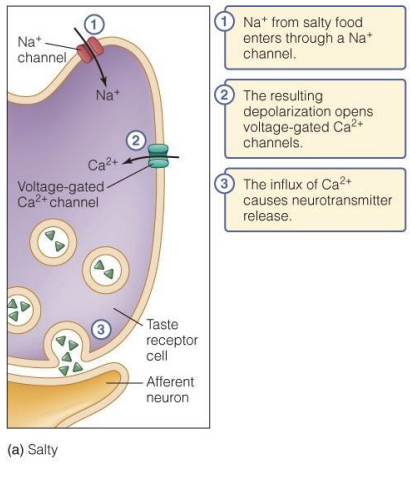
Sour signal transduction
H+ ions from sour foods block the K+ channels
This blockage prevents K+ from leaving the cell
The resulting depolarization opens voltage-gated Ca2+ channels
Influx of Ca2+ causes neurotransmitter release
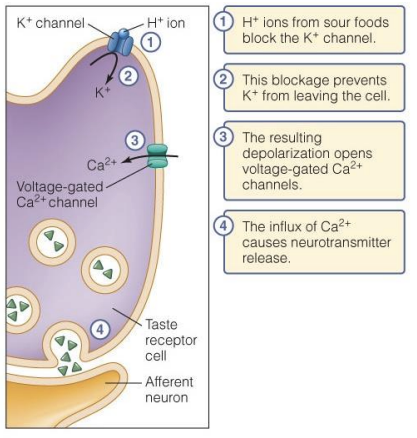
Sweet signal transduction
Sweet Molecule Binding: A sweet substance binds to its receptor on the taste receptor cell.
Conformational Change: The receptor undergoes a conformational change upon binding to the sweet molecule.
Activation of G-Protein (Gustducin): The G-protein, called gustducin, is activated.
Adenylate Cyclase Activation: The activated G-protein activates adenylate cyclase, which converts ATP into cAMP.
K+ Channel Closure: The cAMP activates a protein kinase that closes a potassium (K+) channel.
Depolarization and Ca2+ Influx: The resulting depolarization opens voltage-gated calcium (Ca2+) channels. The influx of Ca2+ leads to neurotransmitter release, signaling the presence of sweetness.
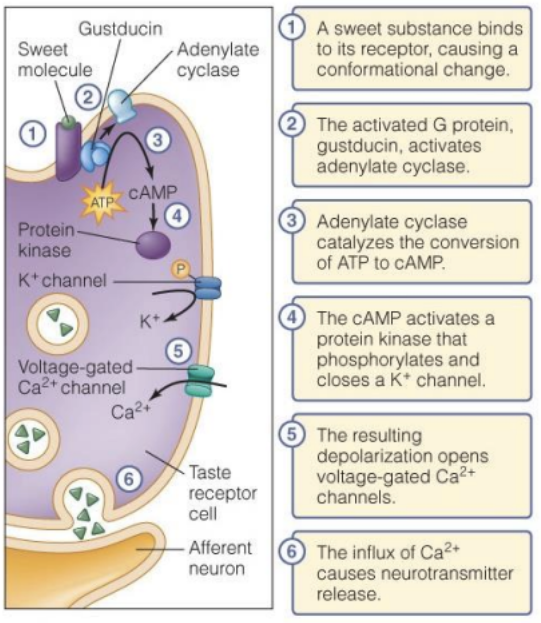
Bitter/Umami signal transduction
Bitter/Umami Molecule Binding: A bitter or umami molecule binds to its receptor.
Conformational Change: This binding causes a conformational change in the receptor.
Activation of G-Protein (Transducin): The G-protein transducin is activated.
Phospholipase C (PLC) Activation: Transducin activates phospholipase C (PLC).
IP3 and Ca2+ Release: PLC converts PIP2 into inositol trisphosphate (IP3), which causes the release of Ca2+ from intracellular stores.
Neurotransmitter Release: The influx of Ca2+ leads to neurotransmitter release, signaling the presence of bitterness or umami.
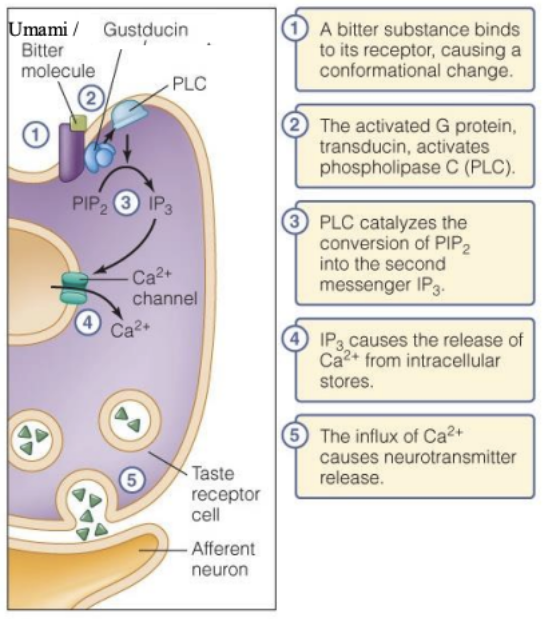
Insula
Region in the cortex near the site for somatosensory information from the tongue that receives information from the taste receptor cells